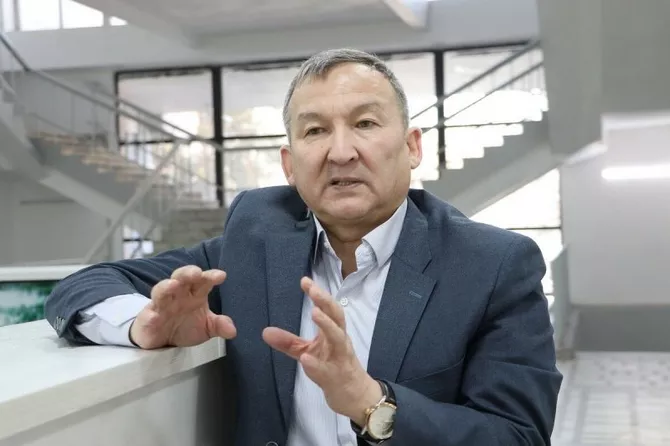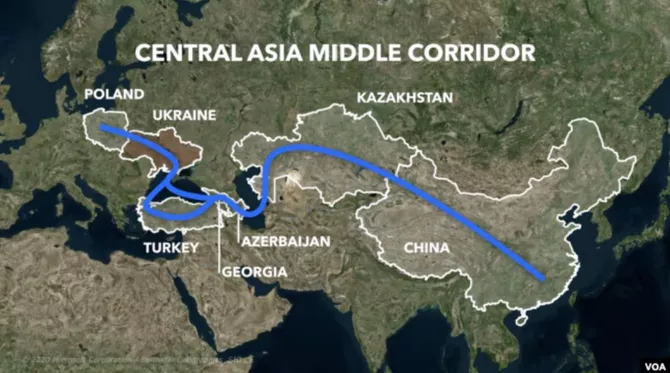
As geopolitical and economic realities shift across Eurasia, Kazakhstan is emerging as a pivotal hub for regional industrial and transit cooperation.
A recent agreement between Iran’s Ascotec holding and China’s Tata Consultancy Services (TCS) to implement Pered technology for the production of sponge iron in Kazakhstan highlights this growing partnership triangle. In an exclusive interview with The Caspian Post, Dr. Magbat Spanov-Doctor of Economics, Professor at Al-Farabi Kazakh National University, and a leading expert at the Institute of Innovative Economics-discusses the strategic implications of this collaboration, the industrial aspirations of Kazakhstan, and the evolving regional architecture connecting Iran, China, and Central Asia.

- Iran’s Ascotec Holding and China’s TCS (Tata Consultancy Services) have signed a cooperation agreement to launch sponge iron production in Kazakhstan using the Pered technology. What does this agreement signify for the future of technological and industrial collaboration among Iran, China, and the countries of Central Asia?
- It’s well known that Kazakhstan is a resource-based economy that mainly exports crude oil, ore, and bauxite. However, domestic processing of ferrous metals is extremely limited. For instance, one of the few large-scale facilities that remains from the Soviet era is the Karaganda Metallurgical Plant, which is capable of producing second- and third-stage products such as billets, slabs, and sheet steel. The construction of a new plant aligns with Kazakhstan’s national policy of promoting the production of goods with high added value. I believe the proposed technology represents only the first phase, and more industrial projects could follow in its wake.
- What is the importance of using indigenous technologies, such as Pered, for strengthening Iran’s industrial sovereignty and export capacity?
- To be fair, Pered may not be the most advanced technology globally. However, under the current sanctions regime imposed on Iran, any mutually beneficial cooperation with countries that do not formally support sanctions becomes a strategic advantage. Kazakhstan may not directly border Iran, but there is growing infrastructure connectivity between the two-especially under the framework of the “North-South” transport corridor. This suggests that cooperation will only deepen in the future, and this project may serve as a launching pad for broader collaboration.
Furthermore, Iran is viewed as a key partner within the Eurasian Economic Union (EAEU), and a free trade zone has been established between Iran and the bloc. This framework creates favorable conditions for bilateral economic relations. Kazakhstan-Iran cooperation holds significant potential and is likely to deliver long-term dividends. Of course, Chinese investment plays a major role in this equation. It is worth noting that Iran, despite enduring more than 40 years of sanctions, has maintained and even strengthened its economic, military, and political resilience. In fact, our countries can learn from Iran’s ability to adapt to external constraints and assert its sovereign interests.

Photo credit: Voice of America
- Are there other projects currently linking China, Kazakhstan, and Iran?
- One of the most significant and widely discussed is the Belt and Road Initiative-specifically the overland “Middle Corridor” route through Central Asia. Kazakhstan plays a crucial role in this corridor, which continues across the Caspian Sea, then through Azerbaijan, Georgia, and Türkiye, reaching Europe. This offers a vital land-based alternative to traditional maritime routes. There is also a well-established rail route linking Kazakhstan and Iran. The advantage here is that it's a completely land-based corridor, making it more resilient and less susceptible to weather disruptions. This railway was completed several years ago and is now actively used for cargo transport between the two countries.
Another promising project, still under discussion, involves a potential new transport corridor that would run from Iran through Turkmenistan and Kazakhstan to China. Various logistical and technical options are being evaluated, and while the project hasn’t launched yet, there are strong indications that it could be activated in the near future. Lastly, I’d like to highlight an important industrial project that was completed in 2016 in Kazakhstan’s Mangystau region. It’s a bitumen plant that was initially designed to meet domestic demand with an annual capacity of around 1 million tonnes. Recently, innovative technologies have boosted its output to 1.5 million tonnes per year. The plant not only fully satisfies Kazakhstan’s domestic needs, but it’s also geared toward exports-including to Central Asian countries, Iran, and potentially Azerbaijan, which has already expressed interest in the plant’s products.
Share on social media